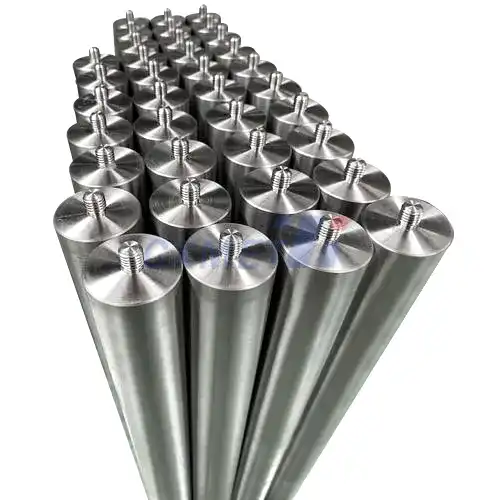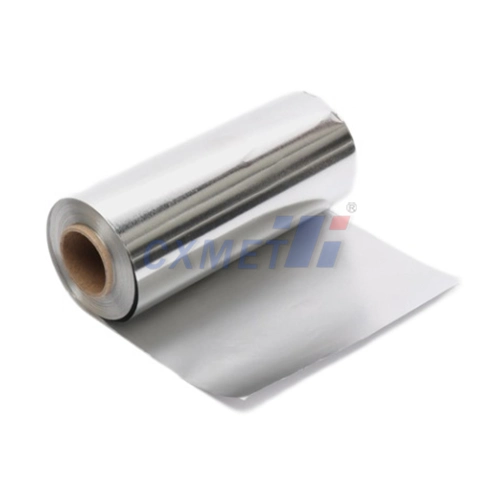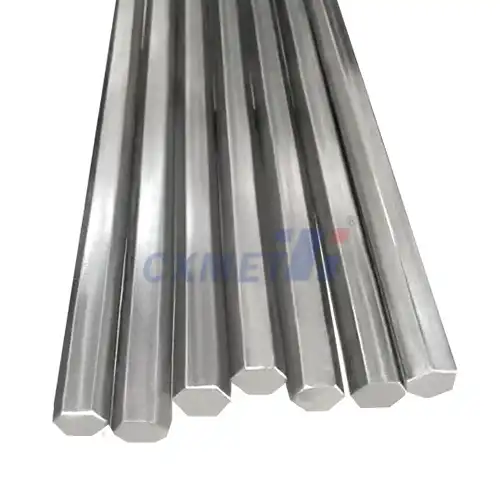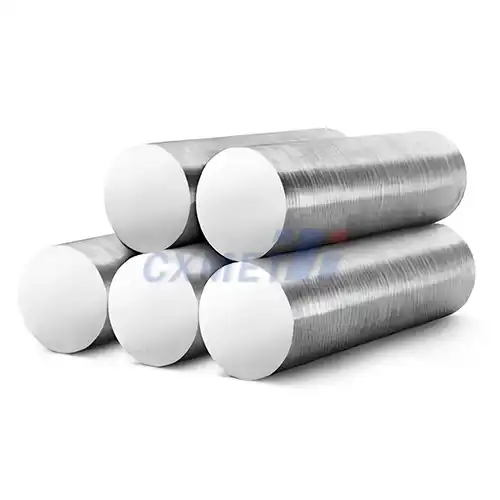How do 3D printed titanium alloy impellers improve aerospace engine performance?
The aerospace industry has been quick to adopt 3D printed titanium alloy impellers due to their numerous advantages in engine design and performance. These components play a crucial role in various aircraft systems, including jet engines, auxiliary power units, and environmental control systems. By utilizing 3D printing technology, aerospace engineers can create impellers with optimized geometries that were previously impossible to manufacture using traditional methods.
One of the primary benefits of 3D printed titanium alloy impellers in aerospace applications is weight reduction. Titanium alloys are known for their high strength-to-weight ratio, and when combined with the design freedom offered by 3D printing, engineers can create lightweight impellers that maintain or even improve performance characteristics. This weight reduction translates directly into fuel savings and increased payload capacity for aircraft.
Furthermore, 3D printing allows for the integration of complex internal cooling channels and aerodynamic features that can significantly enhance the efficiency of aerospace engines. These intricate designs can improve airflow, reduce turbulence, and optimize heat dissipation, resulting in better overall engine performance. The ability to rapidly prototype and iterate designs also accelerates the development process, enabling aerospace companies to bring new, more efficient engines to market faster.
Another advantage of 3D Printing Titanium Alloy Impellers in aerospace applications is their improved durability and resistance to harsh operating conditions. The layer-by-layer construction process of 3D printing can result in a more uniform and dense material structure, reducing the risk of defects and improving overall component strength. This enhanced durability translates to longer service life and reduced maintenance requirements for aerospace engines.
Additionally, 3D printing enables the production of customized impellers tailored to specific engine requirements or operating conditions. This level of customization allows aerospace engineers to fine-tune engine performance for different aircraft types or mission profiles, optimizing fuel efficiency and overall performance across a wide range of operating conditions.
What are the benefits of using 3D printed titanium alloy impellers in marine propulsion systems?
The marine industry has also begun to embrace 3D printed titanium alloy impellers for propulsion systems, recognizing their potential to improve performance, efficiency, and durability in challenging aquatic environments. These advanced components offer several advantages over traditional manufacturing methods, making them increasingly popular for both commercial and military marine applications.
One of the primary benefits of using 3D printed titanium alloy impellers in marine propulsion systems is their superior corrosion resistance. Titanium alloys are naturally resistant to saltwater corrosion, and the 3D printing process allows for the creation of dense, uniform structures that further enhance this resistance. This improved corrosion resistance translates to longer service life and reduced maintenance requirements for marine propulsion systems, resulting in significant cost savings for vessel operators.
The design flexibility offered by 3D printing also enables marine engineers to create impeller geometries that are optimized for specific operating conditions. This optimization can lead to improved hydrodynamic efficiency, resulting in reduced fuel consumption and increased vessel speed. For example, engineers can design impellers with variable pitch or asymmetrical blade profiles that are tailored to the unique requirements of different vessel types or operating profiles.
Another advantage of 3D Printing Titanium Alloy Impellers in marine applications is their potential for noise reduction. By incorporating advanced design features such as swept blade profiles or acoustic dampening structures, engineers can create impellers that generate less cavitation and turbulence, resulting in quieter operation. This is particularly important for military vessels, where noise reduction is critical for stealth operations, as well as for commercial vessels operating in environmentally sensitive areas.
The lightweight nature of titanium alloys, combined with the ability to create hollow or lattice structures through 3D printing, also offers benefits in terms of reduced rotational inertia and improved responsiveness in marine propulsion systems. This can lead to better acceleration and maneuverability, which is particularly advantageous for high-performance vessels or those operating in challenging environments.
Furthermore, the ability to rapidly prototype and produce 3D printed titanium alloy impellers on-demand can significantly reduce lead times and inventory costs for marine propulsion system manufacturers and operators. This flexibility in production allows for faster response to customer needs and the ability to quickly implement design improvements based on real-world performance data.
|
|
|
How can 3D printed titanium alloy impellers enhance efficiency in industrial pump applications?
The industrial sector has also recognized the potential of 3D printed titanium alloy impellers to enhance efficiency and performance in various pump applications. From chemical processing to oil and gas production, these advanced components offer numerous advantages over traditionally manufactured impellers, driving innovation and improving productivity across diverse industries.
One of the primary benefits of using 3D Printing Titanium Alloy Impellers in industrial pump applications is the ability to create complex, optimized geometries that maximize flow efficiency and minimize energy consumption. Traditional manufacturing methods often impose limitations on impeller design, resulting in compromises that can affect overall pump performance. With 3D printing, engineers can create impellers with intricate internal channels, variable blade thicknesses, and optimized flow paths that significantly improve hydraulic efficiency.
The superior wear resistance of titanium alloys, combined with the ability to create dense, uniform structures through 3D printing, results in impellers that can withstand harsh operating conditions and abrasive fluids. This increased durability translates to longer service life and reduced maintenance requirements, leading to improved reliability and reduced downtime in industrial processes. Additionally, the corrosion resistance of titanium alloys makes these impellers ideal for use in aggressive chemical environments or saltwater applications.
Another advantage of 3D printed titanium alloy impellers in industrial pump applications is the potential for customization and rapid prototyping. Manufacturers can quickly produce impellers tailored to specific pump requirements or operating conditions, allowing for faster design iterations and reduced time-to-market for new pump models. This flexibility also enables the creation of replacement parts for legacy pumps, extending the life of existing equipment and reducing the need for costly system upgrades.
The lightweight nature of titanium alloys can also contribute to improved pump efficiency by reducing the overall mass of rotating components. This reduction in rotational inertia can lead to lower energy consumption during pump startup and operation, as well as improved responsiveness to changes in flow conditions. Furthermore, the ability to create hollow or lattice structures through 3D printing can further reduce weight while maintaining structural integrity, opening up new possibilities for pump design and optimization.
In industries where material purity is critical, such as pharmaceutical or food processing, 3D printed titanium alloy impellers offer advantages in terms of cleanliness and contamination prevention. The layer-by-layer construction process can result in smoother surface finishes and reduced porosity compared to traditional casting methods, minimizing the risk of material entrapment and facilitating easier cleaning and sterilization procedures.
As the technology continues to advance, the applications of 3D Printing Titanium Alloy Impellers in industrial pump systems are likely to expand further. Ongoing research into new titanium alloy compositions and additive manufacturing techniques promises to unlock even greater improvements in performance, efficiency, and durability, driving innovation across a wide range of industrial applications.
At SHAANXI CXMET TECHNOLOGY CO., LTD, we take pride in our extensive product range, which caters to diverse customer needs. Our company is equipped with outstanding production and processing capabilities, ensuring the high quality and precision of our products. We are committed to innovation and continuously strive to develop new products, keeping us at the forefront of our industry. With leading technological development capabilities, we are able to adapt and evolve in a rapidly changing market. Furthermore, we offer customized solutions to meet the specific requirements of our clients. If you are interested in our products or wish to learn more about the intricate details of our offerings, please do not hesitate to contact us at sales@cxmet.com. Our team is always ready to assist you.
|
|
|










